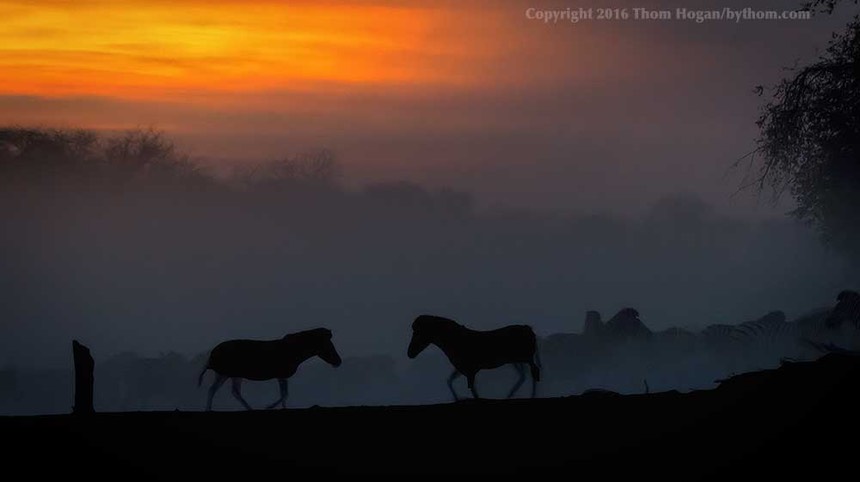At lunch today I drove off from Maun Airport with a new guide to go visit a camp I haven’t been to before, Meno a Kwena. This particular camp is popular with self-drive campers, as it doesn’t sit far off the tarmac road linking Maun down to Jo-berg.
The unique thing about this camp is that it sits at the Western edge of the zebra migration, which is why I’m here: if the river is flowing, the zebras should be here.
In talking with my guide as we drive from Maun I find that the river is indeed flowing. It pushed water down past the Meno a Kwena camp exactly two days ago, and now there’s a river where there previously was just a dried channel (like Savute). And yes, the zebra have arrived. (How do they know?)
The camp itself sits on a bank just above a gentle turn on the river, and directly opposite where the animals tend to come down to the water (it’s a gentle slope there, whereas it’s a steep almost cliff-like drop elsewhere). I’m arriving late to camp, so we barely have time to get out on the boat into the river to shoot sunset.

You may wonder why that image looks so dark and ominous. It’s because the huge mass of zebras moving around kick up a lot of sand as they come down to the water, and at the edge of day like this, it’s like having a cloud of smoke hanging in the air. (Just a reminder: my own personal photographic style tends towards dark and ominous, not the usual stuff you see here on the site.)
Since it’s a migration, one of my goals is to see how many zebra I can get lined up drinking water simultaneously. It doesn’t take long before I exceed my previous record:

It’s a constant flow of zebras. As some get their water and head back up into the woods, others come down to get theirs.

The sun has set and it’s time to go eat. But even with my short look at what’s happening here I’m happy.
